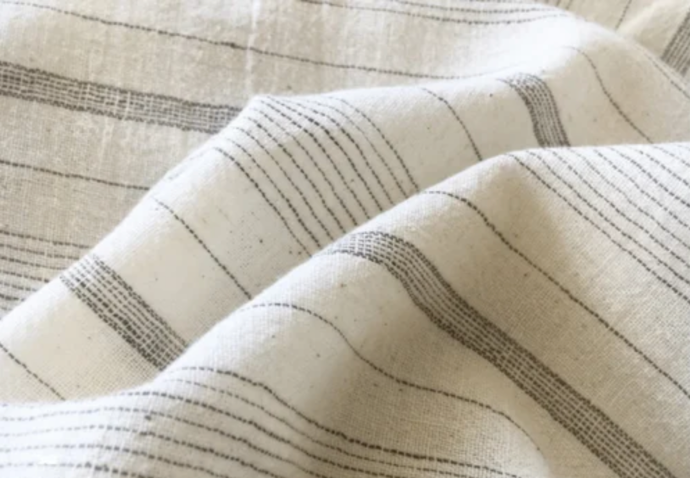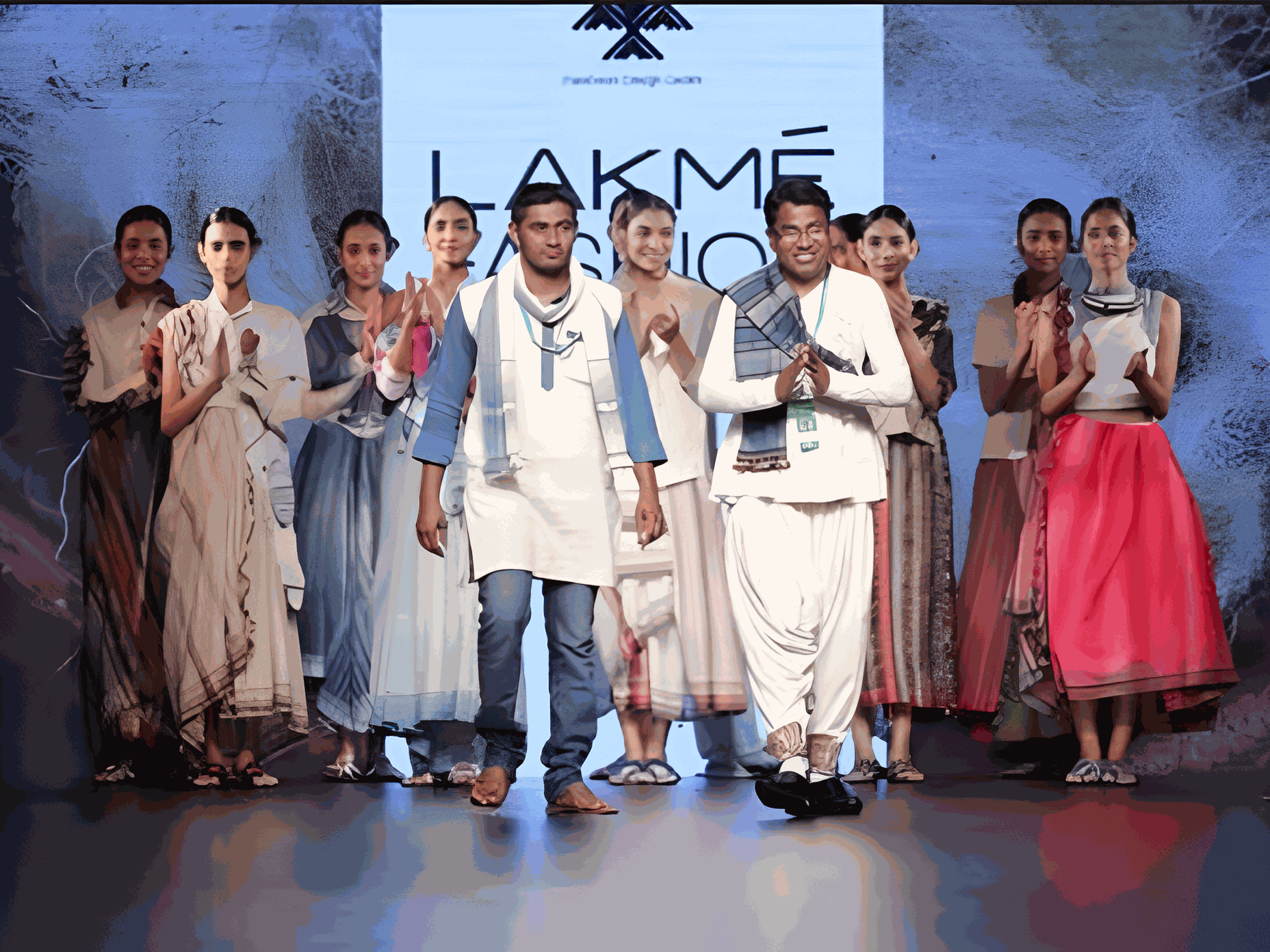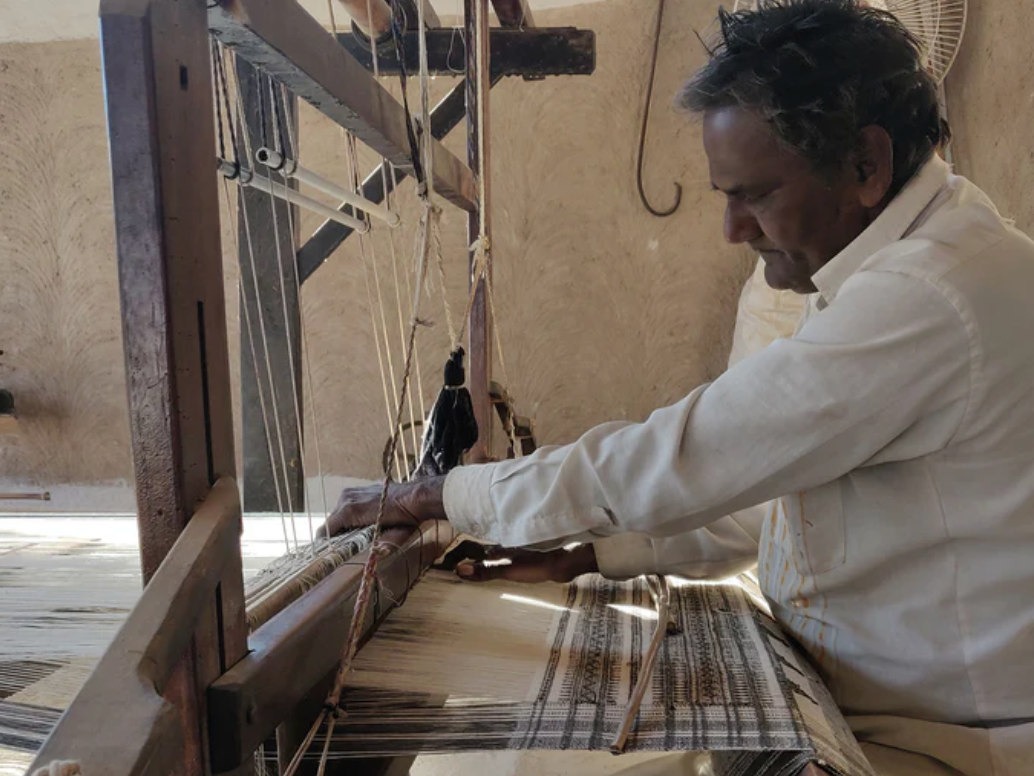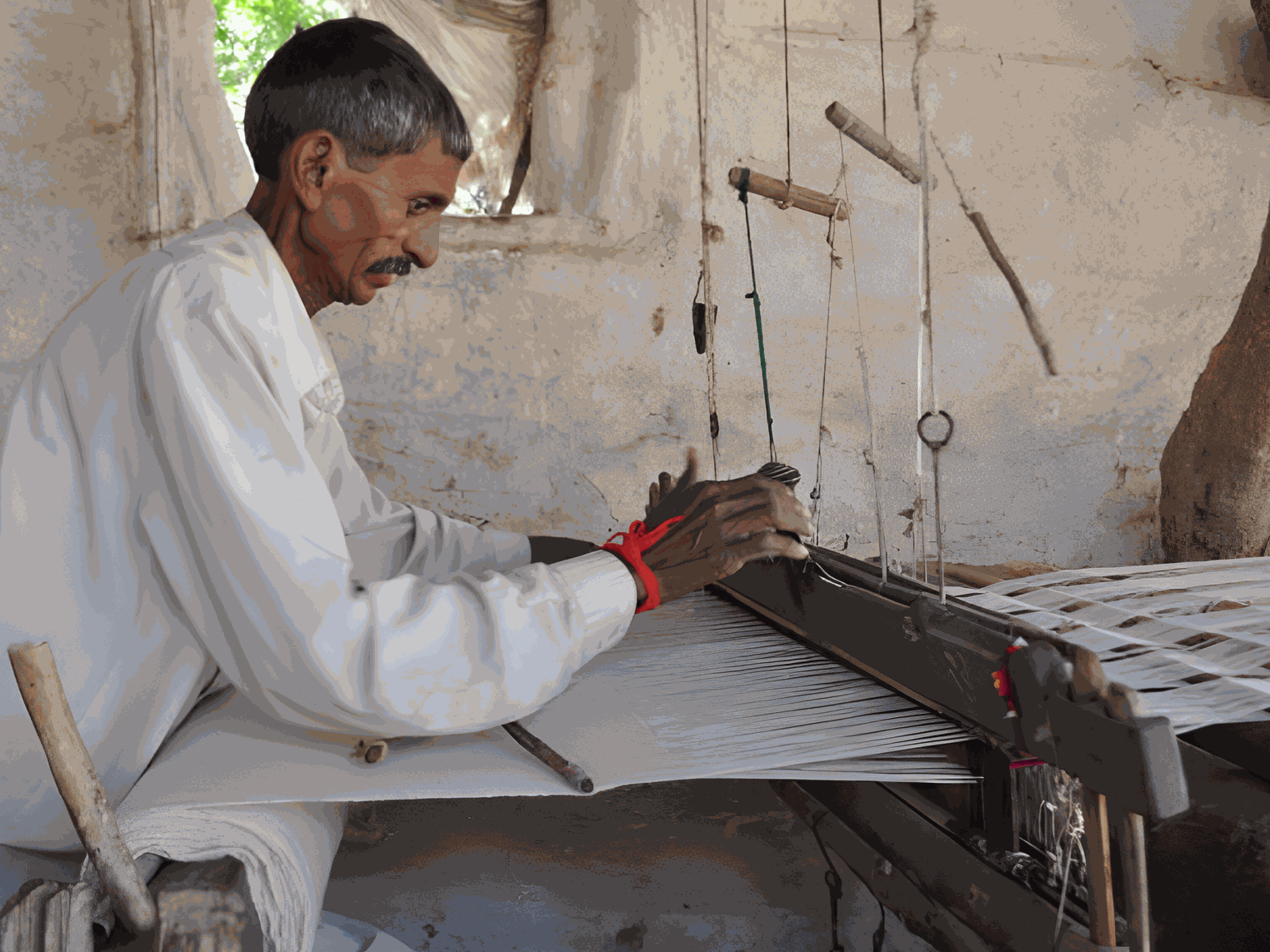What Exactly Is Kala Cotton?
Kala cotton (also called Wagad cotton) is a desi (native) short-staple variety that evolved for India’s drylands. It’s purely rain-fed, naturally pest-tolerant, and usually grown without synthetic pesticides or fertilisers—which means low input costs and a small environmental footprint. The fibre is strong, slightly coarse, and stretchable, making it well-suited to handlooms, denim-ish weaves, and structured wovens.

Why the Sudden Comeback?
Climate reality
Kutch is arid and drought-prone; a crop that thrives without irrigation is a lifeline for farmers.
Market pull for traceable, low-impact fibres
Global brands and consumers want regenerative, place-based fibreswith clear provenance. Kala cotton fits perfectly.
Organised value chain
Since the 2010s, groups like Khamir (Bhuj) have stitched together farmers, ginners, spinners, and weavers to stabilise quality and demand, turning what used to be a “niche craft” into a repeatable supply chain.

How the Supply Chain Works (End-to-End)
Farming (rain-fed, low-input) → 2) Ginning (seed removal) → 3) Spinning (short-staple challenges handled via appropriate twist/technology) → 4) Weaving/Knitting (often on handlooms in Kutch) → 5) Natural dyeing/finishing (commonly indigo, plant dyes) → 6) Cut & sew (small-batch apparel, home textiles).
Khamir’s “Kala Cotton Initiative” helped formalise these linkages and popularise the fabric among contemporary designers.
What Does It Feel and Look Like?
Handle
Crisp, linen-like structure with visible slub; softens beautifully with wear and wash.
Performance
Breathable, sturdy, great for shirts, dresses, trousers, jackets, denim-style wovens, sarees, and home.
Aesthetic
Honest, textured, story-rich—pairs well with natural dyes and craft techniques (ikat, jamdani-style insertions, quilting).
Who’s Using It (and Where You’ll See It)
Craft-to-contemporary labels
India’s slow-fashion pioneers (e.g., 11.11/eleven eleven under CellDSGN) have worked with kala cotton in handwoven denims and ready-to-wear, often with natural indigo.
Retail & sourcing platforms
From Khamir’s own shop to curated eco-marketplaces (e.g., Brown Living) and specialist mills/fabric houses offering kala-cotton denim bases.
Global resonance
International press highlights indigenous cotton revivals like kala cotton as key to resilient, ethical fashion supply chains
Economics & Impact
- Livelihoods: The organised demand has raised weaver wages and created stable work across multiple villages in Kutch.
- Cost structure: Lower farm inputs and rain-fed cultivation reduce risk for farmers; artisan value-add (handloom, natural dyes) enables premium pricing at the product end.
- Exports: Roughly one-fifth of output now ships to Japan, Europe, and North America, helping diversify income beyond domestic markets.

Design & Sourcing Guide (Actionable)
If you’re a designer or buyer:
Finish smartly
Softening washes and enzyme finishes retain the “honest slub” while improving comfort; natural indigo or plant dyes amplify the story.
Plan for consistency
Work with established groups (e.g., Khamir and their partner networks) to secure repeatable qualities and colour standards.
Tell the origin
Customers love place-based storytelling—Kutch, rain-fed agriculture, artisan weaving—paired with QR-code traceability.
Start with the right constructions
Plain weaves, twills, and denim-ish pick densities that work with short-staple yarns; avoid ultra-fine counts early on.

Challenges (and Realistic Fixes)
- Short-staple constraints: Expect slightly lower tensile strength than long-staple cotton; choose the right weaves/yarn counts and test for abrasion/pilling.
- Scale & lead times: It’s still a craft-anchored ecosystem; build longer calendars and consider phased orders (capsules → core).
- Market education: Some buyers still equate “premium” with silky smoothness; position kala cotton as “linen-adjacent” with comfort + durability narratives backed by care guides and fit videos.
Why This Story Has Global Legs
- Climate resilience: Indigenous cottons like kala cotton are being recognised as future-proof crops in a warming world. Vogue Business
- Denim demand tailwinds: With denim markets growing again, kala-cotton denim offers a credible low-impact alternative for brands wanting authentic texture and sustainability claims.


A Simple Playbook to Get Started
- Prototype 2–3 SKUs (shirt, trouser, overshirt) in kala-cotton weaves.
- Lock a vendor cluster (e.g., Kutch) and agree on yarn counts, gsm, and finishes. khamir.org
- Run L/XL-size wear tests for hand-feel, shrinkage, and seam performance; adjust stitch density.
- Launch with a capsule + story film (farm → loom → dyehouse).
- Scale SKUs with best sell-through; keep a core natural/indigo palette and add seasonal accents.

